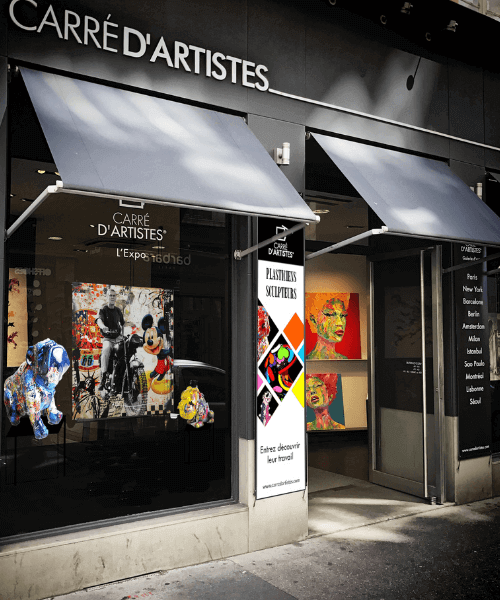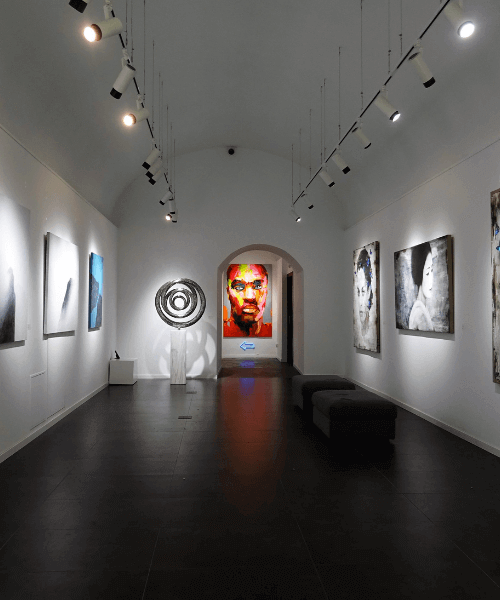The essentials on modern art
At the end of the 19th century, the second industrial revolution transformed Europe.
Inspired by their time, the artists will then shake up the codes of painting, question their know-how, reinvent the ways of representing the world.
They create remarkable works that break with previous artistic movements.
Modern art, with its many and diverse artistic movements, appears.
What is its definition, what are its characteristics?
Before choosing a modern artwork, here is the basics to know about this exciting period in art.
Summary
- At the origin of modern art
- Characteristics of modern art
At the origin of modern art
Historically, the period of modern art is between the 1870s and 1950s, that is, with the arrival of the Impressionists and before the pop art movement.
The modern painter frees himself from the rules in force in the arts. He adapts and is inspired by society, his daily life.
The era of modernity
In the 1870s a period of social, political and cultural upheavals began.
The industrial revolution, marked by great innovations, is accelerating.
Transportation is increasing, making it easier to travel from Paris to New York. Work at the factory intensified, cities became more populated, which foreshadowed the creation of a new architecture. The twentieth century promises to be transformed by all these technological advances.
A rejection of academic arts
The Academies of Fine Arts then hold a high authority in the artistic world.
Painters flock to academic fairs, they owe it to themselves to exhibit their works there in order to claim fame.
Some artists, influenced by their environment, break free from these rules and begin to create in line with their time, in connection with the surrounding modernity.
It all began, in 1863, with Edouard Manet's painting Le Déjeuner sur l'herbe.
Exhibited at the Salon des Refusés, this creation was mocked by the public and caused a scandal, both for its subject and for its style, both breaking with academic standards.
Often regarded as the first work of modern art, this painting made history.
Famous author Émile Zola, art critic, helps castigate official art and help innovative young artists.
Great artists, now known worldwide and exhibited in the most renowned museums, are part of this lineage, such as Paul Cézanne, Claude Monet or Vincent Van Gogh.


Les mouvements dans l’art moderne
Movements in modern art
The main movements of modern art are therefore characterized by their break with the rules of classical art.
They question themselves on the representation of the world, bring a critique of their time.
These are basically:
- realism
- impressionism;
- new art ;
- modernism;
- fauvism;
- expressionism;
- cubism;
- futurism;
- of Dadaism;
- surrealism.
The artistic movements that will emerge in the following years (postmodernism, conceptual art, minimalism, street art and other currents) are classified in contemporary art.
Characteristics of modern art
The so-called modern art period brings together many very different artistic movements.
Artists feed and enrich themselves from the creations of their predecessors.
This is why it is difficult to define precisely what modern art is.
Some particular signs concerning the forms of art produced during this period are, however, noteworthy.
The themes covered in modern art
According to the periods and the movements, the main themes addressed in the works of modern artists differ.
Their common characteristic is to question contemporary society, to dare subjects related to modern life.
The questioning of the established order, whether in the visual arts or in society, appears frequently.
For surrealism, dreams, madness and the unconscious are, among others, privileged.
Another pioneering movement of the twentieth century, futurism was inspired by industrial cities, the speed allowed by new modes of transport. Fascinated by industry, he glorified progress in this uncertain period preceding the First World War.
An unprecedented use of color
Beginning in Impressionism, artists experimented with the infinite possibilities of color.
Greater freedom in their employment is allowed. Color contrasts explode in the paintings of the masters.
In expressionism, artists use vivid colors to convey their emotions.
In cubism, the colors no longer respect those of reality and merge into shades prefiguring abstract art.
New forms and techniques in art
From touches of painting with Impressionism to Dadaist collages, artistic techniques are multiplying.
For example, the painter Henri Matisse invents his cut-out gouaches, collages of which the most famous are his blue nudes.
The artist Pablo Picasso never ceases to renew himself, to experiment with new forms.
The progress of printing allows new means of communication, particularly in the field of the press, advertising and books.
These processes lead painters to experiment with other techniques. The so-called major arts are diffused in society, in everyday life.
Contemporary materials
Modern art is not confined to painting and sculpture.
Architecture, literature and other art forms are part of it.
The advent of photography and cinema also allow artists to express themselves through these new mediums.
Modern artists are looking for new ways of expressing themselves using heterogeneous contemporary materials.
The artist Marcel Duchamp went so far as to exhibit a urinal as a ready-made, placing an ordinary object at the level of art.
His vision has once again transformed the artistic world.
Contemporary articles:
On the subject:
How to choose a modern artwork
find out more:
.png)


